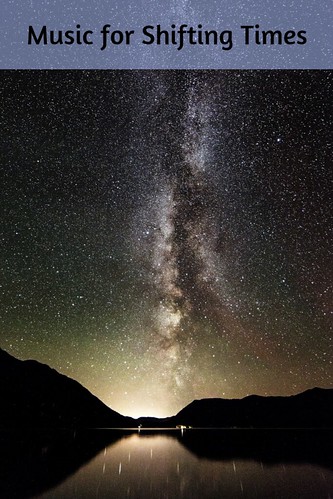Music for Centering and Focus
As circumstances of all sorts continue to shift, and information of all sorts arrives from all directions, making time for centering and focus can be useful.
It can also be challenging.
Music can help with that. Giving the time needed to focus on one song, to center on repeated listenings of a favorite—or a whole orchestra piece or a whole album—can be refreshing. It can also offer space for new ideas to appear, new perspectives to evolve. Both of those may well be needed in these shifting times.

Su-a Lee knows that orchestral music; she is the longstanding assistant principal cellist with the Scottish Chamber Orchestra. With an adventurous musical spirit, she is in demand to add her talent to musical genres beyond classical. In addition to her work on rock, jazz, and world music recordings and in concerts, you will find her playing often with Scottish folk musicians. That includes work with artists you have met before in this series, among them Megan Henderson, Hamish Napier, Lauren MacColl, and Karine Polwart.
“Playing solo is not really my thing,” Su-a says, so when she decided to do an album of her own, she chose to create duets with folk musicians from Scotland and other parts of the world.
This became her album Dialogues.
Duncan Chisholm is an award-winning fiddle player from the Highlands of Scotland -- you’ve met his work earlier in this series too, both with his own albums and playing with Gaelic singer Julie Fowlis.
Prince Charlie’s Last View of Scotland is the tune on which Duncan and Su-a collaborate. It is a traditional tune; its composer is unknown. As you may expect from the title, it is a tune which invites reflection.
Another sort of reflection comes with the song There Were Roses, written by Tommy Sands and sung here by Cara Dillon.
You have met both of them earlier in this series, as well. They both come from Northern Ireland. The story of the song is set there, but the ideas transcend details of time and location.
You will find There Were Roses recorded on Cara’s album Sweet Liberty. You may also want to see Cara’s recent album Coming Home, and her book of poetry, also called Coming Home.
The story Cathie Ryan tells in the song The Wild Flowers transcends the image of wild flowers along a road side in Ireland. John Spillane wrote the song, which offers the idea of those wildflowers as a reminder of and an inspiration for resilience. You will find the song recorded on Cathie Ryan’s album The Farthest Wave. You may also want to look for Cathie’s album Through Wind and Rain.
Calum Stewart comes from the north of Scotland, in Morayshire. He has lived for some time in Brittany in France. Both of those places turn up in the music he chooses, as well as that which he composes. Calum’s instrument is the uillean pipes.
“You can’t live in Morayshire without having your feet touching the sea,” Calum says of his native part of Scotland. The sea finds it way into his music, too: Maol Donaid is a set of tunes drawn from two vocal melodies Calum found in a collection published in 1784 but that Calum thinks are much older. They are meant to be songs sung by fishermen to attract seals. You will find the set on Calum’s album True North, on which he is joined by Yan Le Bozec on double bass and Sylvain Quere on cittern.
That is a rather lively tune of reflection and the sea. While we are on the subject of sea and seals, consider another point of view: Oran an Roin, a story coming from Scotland’s legends of the seal people. You needn’t know Gaelic to appreciate the reflection on connections among nature, legend, and humankind that Julie Fowlis offers as she sings. You will find the song on her album Alterum.
Another invitation to reflect on nature to draw this story to a close: Merry Dancers from the band Fara.
Band members Catriona Price, Kristan Harvey, and Jeana Leslie are from Orkney; Rory Matheson comes from Lochinver. Both these locations are good places to see the northern lights, which in Scotland are often known as the merry dancers.
Jeana Leslie sings lead on the song with words she adapted from a poem by Lucy Dougall; Jeana and Catriona wrote the music and Catriona the arrangement for the song. You will find Merry Dancers on Fara’s album Energy Islands.
May the creativity of these artists invite you to ways to center and find focus and reflection in these shifting times.
Thank you for staying with us through this journey. Below, you'll find a link that will take you to an article which has a bit more backstory on the series. It also has links to a number of the stories, including ones called Listening for Community, Music for Winter's Changes, and The Geography of Hope.
Kerry Dexter is Music Editor at Wandering Educators.
You may find more of Kerry's work in National Geographic Traveler, Strings, Perceptive Travel, Journey to Scotland, Irish Fireside, and other places, as well as at her own site, Music Road. You can also read her work at Along the Music Road on Substack.






















